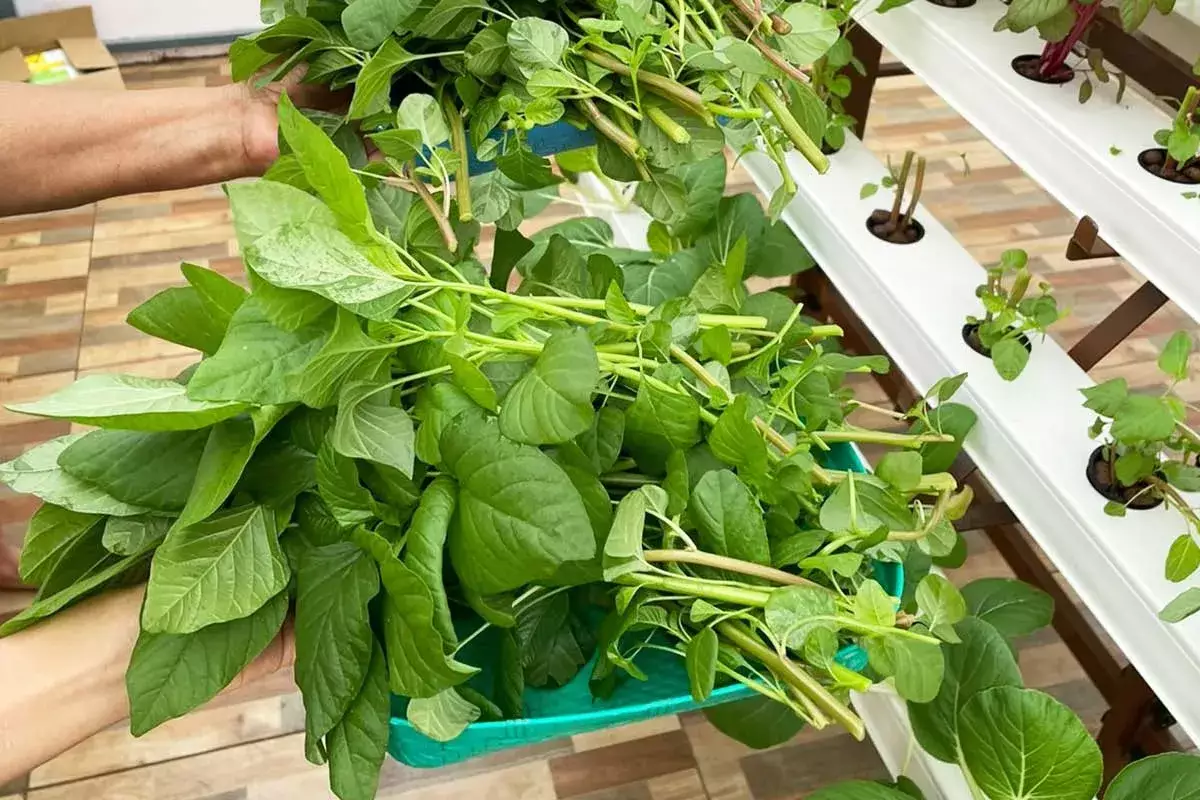Why is Hydroponics Farming the Future of Agritech?
Watch any news program these days, and chances are you'll see a feature or story about the Earth's impending climate disaster. Climate scientists all across the globe now agree that our planet is changing - primarily due to human intervention.
Farming is top on the list of human activities blamed for the ecological crisis, prompting many to seek new, greener solutions. As a possible remedy to the problem posed by traditional agriculture, consider the beautiful world of hydroponic gardening. The growing population isn't the only issue that modern farmers face. What about labor shortages and customer demand for eco-friendly foods? Traditional techniques, on the other hand, are incapable of meeting this massive demand. As a result, farmers and food producers are looking for new ways to increase productivity while lowering waste. Hydroponic farming is the answer to all your questions.
Today, we’re going to look at why hydroponics farming is the future of Agritech — and how it can drastically change agriculture and food production as we know it. Hydroponics is an agricultural method that does not use soil to grow plants; instead, it uses an inert medium, such as sand or gravel, to provide support for the plant’s roots. The growing mediums are filled with nutrients, which are then absorbed by the roots and transferred throughout the rest of the plant.
The agriculture industry has come a long way from the traditional farming method of planting seeds in the ground and waiting for nature to take its course. Now, with the advent of hydroponics farming, farmers can grow high-quality produce using highly efficient methods that yield greater harvests in less time with fewer inputs such as water and fertilizers. Learn more about how this revolutionary new method will change the future of commercial farming forever.
What are the opportunities for hydroponic farming concepts in India?
Farming patterns are shifting throughout the world, and India is well positioned to capitalize on this shift. According to contemporary agricultural techniques being used today, plants require water, nutrients, and high-quality seeds. There is no need for soil. This is referred to as hydroponic farming. To grow plants, hydroponics employs a spectrum of blue, red, and yellow hues rather of sunshine. By all accounts, hydroponic farming in India is still in its infancy in the country's agricultural business. In truth, farming techniques in India are essentially traditional. With the exception of Tier 1 cities, current hydroponic farming markets are limited to metropolitan and metropolitan cities. Farmers in India who are forward-thinking are using novel hydroponic gardening techniques
Hydroponics is gaining popularity in India.
In India, hydroponics is still in the growing stage, with the majority of farms operating as start-ups. Large enterprises, on the other hand, are joining the market, which will increase their commercial acceptance. Large farms are prevalent in southern and western India. According to our research, Southern India has the largest percentage, with cities such as Hyderabad, Bangalore, Chennai, and Kochi having a large number of farms and many new small and medium farms being built.

The Potential of Hydroponic Farming in New India
India's population is rising at an arbitrary rate, which is one of the primary causes of the country's dwindling availability of agricultural land. As agricultural land area declines, the capacity of a rapidly rising population to provide staple foods becomes increasingly challenging. Hydroponic farming will address India's dilemma of limited cultivable land in the future. More staple crop kinds may be grown, and soil and water use might be reduced or eliminated totally. When crops are produced in the visible light spectrum and fresh food is available to everyone on the ground, this is what it will look like. It might herald the beginning of a new Green Revolution, which millennials will witness personally.
Save Fuel, Protect the Environment
If you want to start your own soilless farm, Plantme Agro will help you and your product may flow directly from the growing system to the table. Even if you select a nearby hydroponic farm, you will still help to save the environment by reducing the water and carbon footprints associated with transportation.
Sustainable agriculture is primarily concerned with measures that lessen reliance on nonrenewable or ecologically hazardous supplies. Eco-agriculture, permaculture, organic, ecological, low-input, biodynamic, ecological, community-based, and comprehensive techniques are examples of these. Soilless agriculture is an ecologically friendly agriculture that is sensitive to the environment and built on a communal approach, both in form and in substance.
Conclusion
Finally, hydroponic farming significantly minimizes pest and weed generation. Pesticides, insecticides, and weedicides will be applied less frequently as a consequence. There will be no land pollution. For the time being, this technological revolution is a fringe movement, and considerable study is being conducted.
We’ve seen here that hydroponic farming is a leading-edge innovation in agriculture technology. As it becomes more cost-effective and as people become more aware of its benefits, we expect to see hydroponic farming move out of niche markets and into mainstream commercial farming, ensuring higher food yields and superior taste. Exciting, right? Well, let’s talk about where you go from here.
First, if you want to learn more about hydroponics farming, check out these articles:
- 5 Reasons why we should farm with Hydroponics
- MImportance of greenhouse farming & hydroponic cultivation methods
- First grade vegetables - Hydroponic farming gaining more relevance
- Impact of Climate Change on Agriculture
Second, if you want to get involved with creating new Agritech innovations like hydroponics farming for commercial use, connect with Plantme Agro.
Finally, if you have any questions or comments on anything we’ve covered today—or if there are other topics related to Agritech or agri-food tech that you want us to cover—leave a comment below!
For more details visit Plantmeago
Go Back


